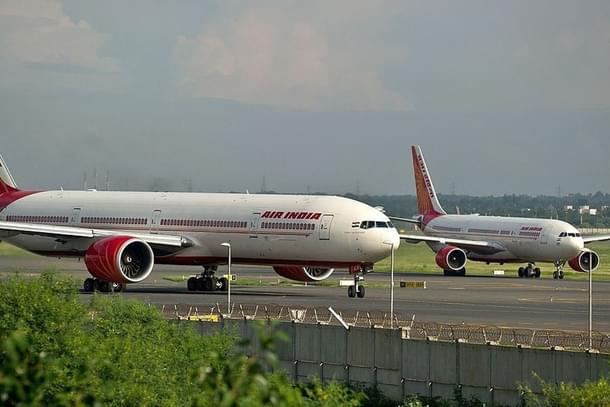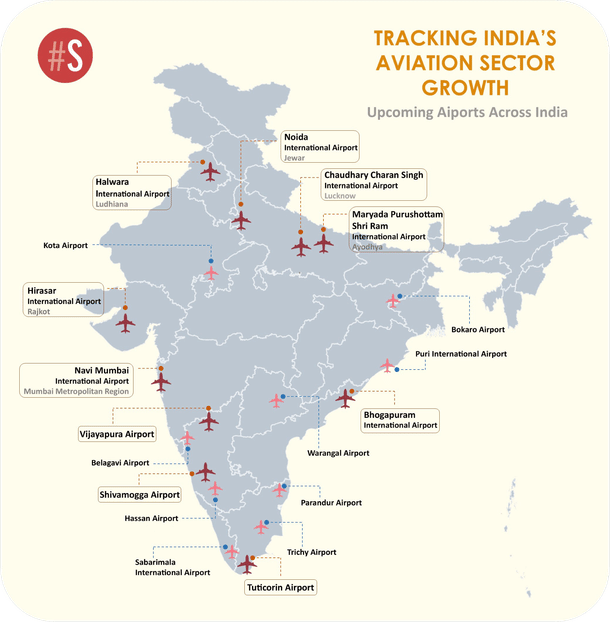Infrastructure
Fifty Airports, Five Years: All About Government's Plan To Take Air Connectivity To India's Smaller Cities
Swarajya Staff
Sep 04, 2024, 09:36 AM | Updated Sep 06, 2024, 05:45 PM IST
Save & read from anywhere!
Bookmark stories for easy access on any device or the Swarajya app.


The Central Government has announced a comprehensive five-year plan to develop and expand more than 50 airports across smaller cities, Mint has reported.
This strategic initiative, spearheaded by the Airports Authority of India (AAI), aims to bolster airport infrastructure through various projects set to be undertaken by the central government, state authorities, and private players up to 2030.
This ambitious plan comes amid a surge in domestic air travel, with Indian air traffic recently reaching a record high. On September 2, domestic air traffic peaked at 477,554 passengers, surpassing the previous record of 470,751 passengers set on April 21 earlier this year.
A key highlight of the plan is the development of Bihta Airport, which will serve as the secondary airport for Bihar’s capital, Patna. The airport is scheduled to have its foundation ceremony by the end of 2024, in response to the anticipated saturation of Patna Airport around the early 2030s due to increasing travel demand.
Once operational, Bihta Airport will feature over 60 check-in counters, more than 15 self-check-in kiosks, and will be equipped to handle 3,000 passengers during peak hours. The airport is projected to have an annual capacity of up to 5 million passengers over the next two decades.
The five-year plan also includes the construction of greenfield airports in Ankleshwar and Dwarka in Gujarat. According to Pragya Priyadarshini, vice president at management consulting firm Primus Partners, the planned development projects are expected to drive significant growth in air travel demand from currently underserved or unserved cities.
As new industries, infrastructure, and services emerge in these regions, there will be an increasing need for efficient connectivity to other parts of the country and the world.
In addition to new airports, the government is preparing to commence development work on new civil enclaves at several air force stations. Projects scheduled for the next five years include those at Thanjavur in Tamil Nadu, Hasimara in West Bengal, and Thoise in Ladakh, among others.
Moreover, existing airports are set to transition to accommodate larger aircraft.
Notable upgrades include the adaptation of VFR (Visual Flight Rules) operations for narrow-body aircraft like the Airbus A320 at Agatti Airport, the implementation of IFR (Instrument Flight Rules) operations for narrow-body aircraft at Pantnagar Airport in Uttarakhand, and the expansion of Mysuru Airport to handle narrow-body aircraft.
VFR flight rules require pilots to operate aircraft with visual reference to the ground and to avoid obstructions and other aircraft. Conversely, IFR flight operations depend on instrument navigation when visual reference is insufficient.
Currently, India has 131 operational airports, including international, domestic, and custom airports.

As air traffic continues to rise, Indian airlines are preparing to meet the increased demand. Major carriers such as IndiGo, Air India, and Akasa Air have plans to introduce over 1,600 new aircraft by the end of the decade, further enhancing capacity and connectivity.




